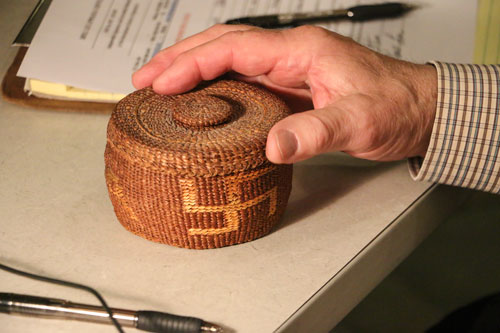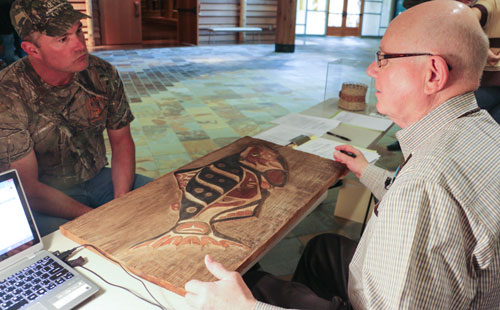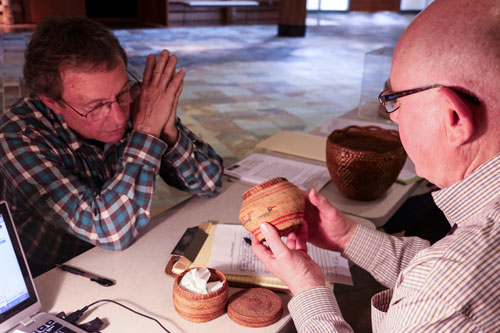Hibulb Cultural Center will feature special guest Tessa Campbell and her dog Buster at their Children’s Reading Time series held tomorrow, Saturday at 1:30 p.m.
syəcəb
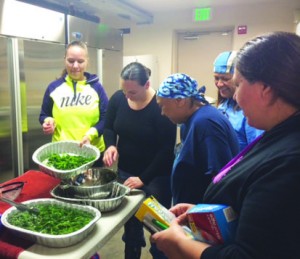
By Micheal Rios, Tulalip News
On Sunday, March 15, 2015 the Hibulb Rediscovery Program held a native gardening plant class to give Tulalip tribal members the opportunity to connect with their ancestral roots. This class was coordinated by Rediscovery Program staff members Inez Bill, Joy Lacy and Virginia Jones.
“We were very glad to see the large volume of interest. The class filled up very quickly,” says Virginia Jones. “We are thankful for the interest and wish we could offer it to more people. We are glad that people understand why we need to offer this class to our tribal members. We were anxious to see what kind of turn out we were going to have considering it was pouring down rain, but, despite the terrible weather, we were grateful to have a full class.
“The people got to hear advice about working with plants that has been picked up over the years from different teachers. The group went out and endured the rain. They learned how to harvest, clean, and process stinging nettles. They got to learn some of the uses for stinging nettles and what type of areas to look for them in. It was exciting to see. The class really came together and did the work. After the work was done they shared a light lunch.
“One of the important messages I hope everyone was able to take home is that it’s our responsibility to take care of these plants and the world they live in. It is just like fishing, hunting, clam digging, and berry picking. If we don’t protect their environments then there won’t be any places for us to harvest them from. If we overharvest, then there won’t be enough to sustain themselves. This is something that our people did for thousands of years. Now it is all being threatened by pollutants, new development areas, and people. I think a lot of the older generation can agree that the ‘woods’ just aren’t what they use to be. If we are going to go out and take these living things, then it is also our responsibility to protect them.
“Again, we thank everyone for their interest in the class. We are glad that there are so many people willing to reintroduce these plants back into their lives. These plants are able to provide their body and spirit with so much more than store bought foods.”
For more information about Hibulb Cultural Center events visit www.hibulbculturalcenter.org
By Micheal Rios, Tulalip News
The Hibulb Cultural Center and Natural History Preserve’s Rediscovery Program is offering Tulalip tribal members an exciting new class to reconnect with their traditional culture. The class is part of a series of classes entitled ‘Native Plants and Medicinal Herbs’ that will be ongoing during the traditional harvesting season, early spring to late fall. The series of classes will focus on teaching tribal members how to collect, garden, harvest, and process native plants and herbs that are indigenous to the Tulalip region. The first of a full series of native plant gardening classes will take place Sunday, March 15, starting promptly at 9:00 a.m. and ending at 4:00 p.m., at the Center’s facility classroom.
“Our plants are our medicine. They nourish our bodies and feed our spirit,” says Inez Bill, Rediscovery Coordinator. “We want to see our people gardening and harvesting the plants and herbs that our people have used historically. So we are starting this brand new series of classes that will help pass on the values and teachings of our ancestors. Hopefully, by taking the classes, our people will begin to use these plants at their homes and grow them in their gardens for their own use.”
Over the past four years, the Rediscovery Program has hosted its ‘Gardening Together as Families’ classes that emphasized teaching our tribal membership how to grow their own organic vegetable gardens. The Rediscovery Program staff think that the time is right to shift from a general theme of organic vegetables to one that specifically tailors to the traditional gardening customs of our Tulalip ancestors. By reintroducing the Tulalip people to native plants and herbs that were once used by our ancestors for generations.
“We’ve been doing the ‘Gardening Together as Families’ classes for four years now. That was an opportunity for people to come get hands-on experience growing their own organic vegetables. Now, we are able to shift the theme of our gardening classes to accommodate the needs of our people,” explains Rediscovery staff member Virginia Jones. “We want to give the people an opportunity to learn about the uses of Tulalip native plants and to grow them at their own homes.”
Throughout this new series of native plant gardening classes, there will be a primary focus of working with and getting familiar with the many uses of five major native plants; the stinging nettle, fireweed, giant horsetail, the Nootka Rose, and mountain huckleberry. There will be other native plants worked with as well, to supplement the uses and knowledge that come from working with the five major native plants.
“These plants we will be working with are all traditional food sources. They are something that are ancestors would have had, and so we are really fortunate to have them still available to us,” says Jones. “Today these foods are no longer a part of our everyday diets. We are trying to reintroduce these native plants back into the diets of our people. We want to reach our people on that level because these plants were used as foods that healed us and kept our bodies full of all different types of nutrients that our bodies needed.”
To participate in the first class in this new series, to be held March 15, the Rediscovery Program staff ask that you please RSVP ahead of time by calling Virginia Jones at (360) 716-2635 and leave a brief message with your name and how many family members will be attending with you. The initial class will be accepting 20 tribal member participants, so RSVP your spot as soon as possible.
Also, all those who will be participating in the native plant gardening class should remember to bring garden gloves and paper bags.
“Working with native plants is our culture,” says Bill. “It’s a delicate balance of going out and being with nature, gathering plants in prayer and working with them in a respectful way. We are one with nature at this time.”
Contact: Micheal Rios, mrios@tulaliptribes-nsn.gov
By Brandi N. Montreuil, Tulalip News
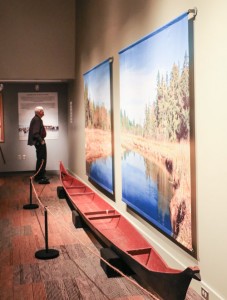 TULALIP – The first Thursday of each month the Hibulb Cultural Center & Natural History Preserve features free admission to their exhibits, guest lectures and workshop series and a chance to purchase new arrivals at the center’s gift shop.
TULALIP – The first Thursday of each month the Hibulb Cultural Center & Natural History Preserve features free admission to their exhibits, guest lectures and workshop series and a chance to purchase new arrivals at the center’s gift shop.
Guests today will enjoy free admission to the center’s new exhibit, A Journey with our Ancestors: Coast Salish Canoes, in addition to its main exhibit where you will learn about the history of the Tulalip Tribes, and Warriors We Remember, a gallery that tells the story of the Tulalip Tribes military tradition. This exhibit honors the Tulalip men and women who served their country in time of conflict and peace.
A Journey with our Ancestors: Coast Salish Canoes features a linear format which tells the historical timeline of canoe use and importance starting with pre-contact. Visitors will not only learn how canoes are used by Coast Salish tribes to travel, but also the different canoe styles, anatomy and how they are constructed, along with traditional canoe teachings and stories and about canoe carvers, canoe races and canoe journeys.
There is no scheduled workshop or guest lecture today.
Hibulb Cultural Center is open Tuesday through Friday , 10:00 A.M. to 5:00 P.M. and Saturday and Sunday from 12:00 P.M. to 5:00 P.M. and is located at 6410 23rd Avenue NE, Tulalip, WA, 98271. For more information about the center, please visit their website at www.hibulbculturalcenter.org.
Brandi N. Montreuil: 360-913-5402; bmontreuil@tulalipnews.com
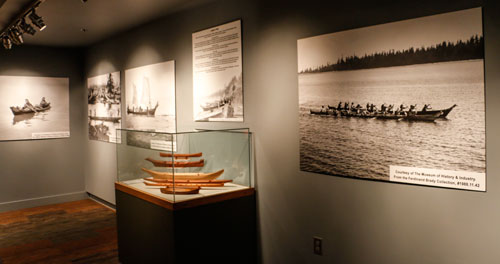
By Brandi N. Montreuil, Tulalip News
 TULALIP – Hibulb Cultural Center and Natural History Preserve has packed their August schedule with exciting events that includes the center’s third anniversary celebration and a community event that brings elders and youth together to share wisdom and stories.
TULALIP – Hibulb Cultural Center and Natural History Preserve has packed their August schedule with exciting events that includes the center’s third anniversary celebration and a community event that brings elders and youth together to share wisdom and stories.
The host of activities kicks off on Sunday, August 3, with Tulalip storyteller Kelly Moses who will be telling traditional Tulalip stories in the center’s longhouse. At 1:00 p.m.
The center will host its 3rd anniversary celebration on August 16, beginning at 10:30 a.m. with Tulalip storyteller Lois Landgrebe, who tells traditional Tulalip stories in English and Lushootseed. Joining Landgrebe will be Jeff Hogan, executive director of Killer Whale Tales, an educational environment program that brings together the art of storytelling and field-based science to inspire listeners to take an active role in conservation of the Pacific Northwest killer whale habitat.
The anniversary event will also feature Tulalip poet, Ceriwyn Hanney, at 12:00 p.m., who will read original work. Immediately following Hanney will be a lecture at 1:00 p.m. given by Father Patrick Twohy, Superior of Jesuits of the Rocky Mountain Mission, who will be discussing his work with Coast Salish communities and his books, “Finding a Way Home” and “Beginnings – A Meditation on Coast Salish Lifeways.”
Tulalip artist Richard Muir Jr., will be holding a peyote stitch demonstration with kits available for purchase at 2:00 p.m. Following at 3:00 p.m., Tulalip master weaver Lance Taylor will also be hosting a demonstration on cedar weaving. To end the anniversary celebration the center, at 4:00 p.m., will feature Travis Holt Hamilton, who will be screening the movie, “More than frybread,” starring Tatanka Means, Gloria Dodge and Ernst Tsosie III.
On August 23, Angela Carpenter will be reading one of her favorite children’s book for the center’s children reading time series. Also scheduled for this series is Lois Landgrebe, who will read one of her favorite children’s books on August 30. Both reading times start at 1:30 p.m.
To wrap up the August event schedule the center will be hosting a campout style community event with the Elders and Youth Transfer of Knowledge Conference, August 26-28. The conference will be held at the Bay View Ranch House in the Warm Beach Camp in Stanwood and will feature Ray Williams, Don Hatch Jr., and Father Pat Twohy S.J., who will tell stories and host engaging discussions with the youth. This event requires registration with Hibulb staff.
August also marks the deadline for film submissions for the center’s second film festival. The deadline for the “Family, Through our Eyes” film festival is midnight August 24. Films submitted should include topics based on family history, heritage and honor and shared connections to recount history, culture and wisdom from your family’s perspective. This year a new youth category, anti-bullying has been added. Other film categories include documentaries, feature films, music documentaries, music videos and shorts. There is no entry fee for submissions. “Family, Through our eyes,” will be held on September 20th.
For more information on the Hibulb Cultural Center’s August events or the “Family, Through our eyes,” film festival, please contact the Lena Jones at 360-716-2640 or Mary Jane Topash at 360-716-2657, or visit their website at www.hibulbculturalcenter.org.
Brandi N. Montreuil: 360-913-5402; bmontreuil@tulalipnews.com
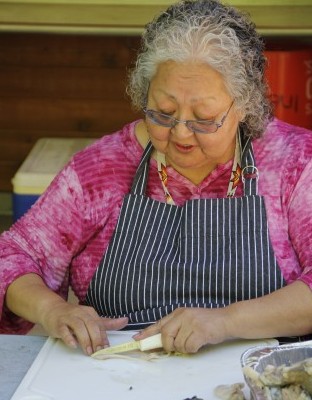
By Andrew Gobin, photos by Andrew Gobin, Niki Cleary, and Theresa Sheldon
The Rediscovery Program at the Hibulb Cultural Center and Natural History Preserve has been more busy than usual over the last few weeks, gathering and processing traditional foods. Program staff have been planning harvesting events, showing groups of Tulalip community members how to what can be gathered where, when, and how.
Program Coordinator Inez Bill-Gobin said, “Our native foods feed not only our bodies, but our spirits too. I think we are really rich in our culture when we are able to harvest and use our native foods.”
On Monday, June 30, Rediscovery Program staff took a group of Tulalip community members to gather wild blackberries, elderberries, and native teas. A bountiful harvest yielding much more than foods, as many teachings are shared.
Bill said, “We were gathering wild blackberry. A lot of people don’t know that these small berries are indigenous berries. Not like the Himalayan Blackberry you see, which is invasive.”
These events and others like them are in preparations for a cultural workshop to take place in early August of this year. Each excursion is an opportunity to learn about the many uses of traditional foods. For example, the blackberry vines offer more than berries, the leaves can be made into tea. While they gathered no blackberry leaves, the group did harvest horsetail and fireweed to be dried for tea. The people gathering foods and materials with the Rediscovery Program will become teachers themselves, as the community draws together for four or five days of gathering traditional foods, preparing them, enjoying them, and learning and remembering the traditional ways of our people.
“Everyone has a gift. Everyone has something to offer. These teachings are our teachings, and they are for everyone. Even the new ones have a gift. I was teasing Niki that we know what her gift is, she picked the most berries of all of us,” said Bill about Niki Cleary, who harvest blackberries with the June 30 group.
On Tuesday, July 1, people joined the Rediscovery staff at the Hibulb Cultural Center to process the berries, canning them into preserves for later cultural activities.
After drying for a few days, the horsetail and fireweed teas were ready to be processed and packed away. On Thursday, July 3, Bill and her protégé Virginia Jones taught Courtney Sheldon and Darkfeather Ancheta how to make the horsetail and fireweed teas, specifically the base measurements and cook time.
About six weeks ago, the Rediscovery Program harvested clams and cockles, freezing them. Tuesday, July 8, rediscovery, youth services, and cultural staff processed the clams along with a deer, to be smoked, using their new smokehouse for the first time.
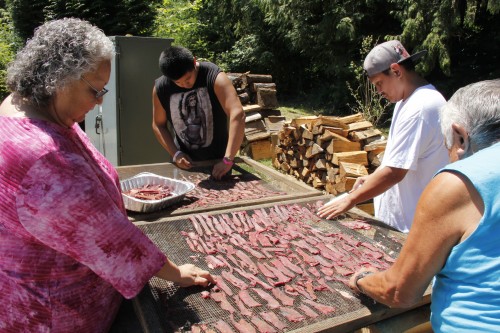
The dates for the harvest celebration in August are yet to be determined. Look for updates here in the see-yaht-sub, on Tulalip News website, or contact events coordinator Robert Watson by phone at (360) 716-4194, or by email at rwatson@tulaliptribes-nsn.gov for more information.
Andrew Gobin is a staff reporter with the Tulalip News See-Yaht-Sub, a publication of the Tulalip Tribes Communications Department.
Email: agobin@tulalipnews.com
Phone: (360) 716.4188
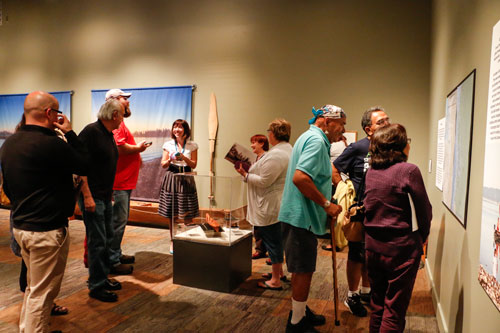
New Hibulb exhibit gives an in-depth look at Tulalip’s canoe culture
By Brandi N. Montreuil, Tulalip News
TULALIP- “Imagine you are at the shore of the Salish Sea where a grand ocean-going family canoe floats patiently, waiting for you and others to begin your journey. The rivers, lakes and seas are our earth’s arteries, carrying its life force of water. For thousands of years they functioned as our ancestors’ highways, connecting our people together,” reads the opening display panel in the new interactive temporary Hibulb Cultural Center and Natural History Preserve’s exhibit, “A Journey with our Ancestors: Coast Salish Canoes.”
The new exhibit, on display through June 2015, explores canoe culture in Tulalip and in Coast Salish tribes. A soft opening for the exhibit was held on Friday, June 27, with over 80 guests in attendance. This interactive exhibit features over 70 items that guests can explore canoe culture through, such as videos on carving canoes, maps, display panels, paddles and tools used to carve canoes with, and a large canoe that guests can sit in.
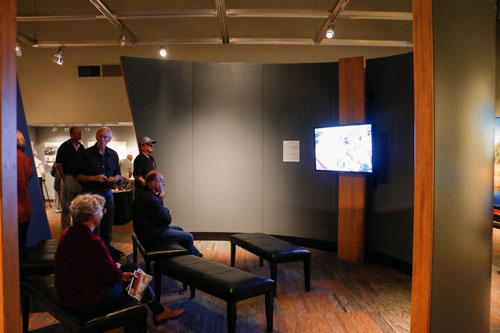
“We hope guests learn the importance of canoes and how they were tied to all aspects of our life,” explains Mary Jane Topash the center’s tour specialist, about what guests can expect from the new exhibit. “We hope to educate people on the types of canoes, anatomy, tools, what it takes to build one, and how they are still used to this day. This exhibit will encompass all aspects of the teachings, history, lifestyle, and how their importance hasn’t changed a whole lot over the years.”
Coast Salish Canoes highlights the roots of the Canoe Journey and the important role that canoes played in its revitalization during the 1989 Paddle to Seattle.
“It was a big learning process for us. It didn’t just happen in 1989,” explained Tulalip carver Joe Gobin, about the preparation involved in the Paddle to Seattle. “Frank Brown and Ray Fryberg Sr. got our [Tulalip] Board involved and the Board saw how this was something missing in our culture. They sent us to different reservations to learn, to Lummi and Makah, because none of us knew how to carve a canoe. We all talked about it and the tools we needed, and how when we were making the canoe we were bringing the tree back to life. And it did come back to life on the reservations, and it brought back so many things in our culture that were forgotten. I am glad to see this exhibit here.”
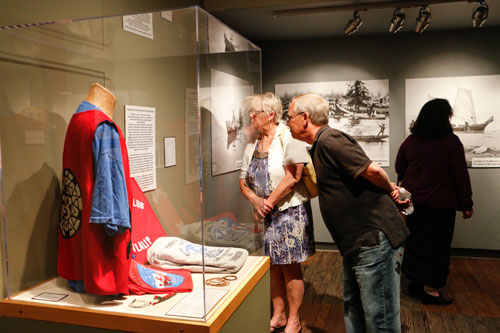
Lena Jones, the center’s curator of education, says guests will leave knowing the importance of canoes in Coast Salish culture. “Our ancestors helped keep a rich environment with superb art. We hope the exhibit will help people appreciate the social gatherings of the Coast Salish people and help our young people recognize their community’s role in revitalizing important Coast Salish traditions that can, and do, help the region.”
For more information on “Coast Salish Canoes,” please visit the Hibulb Cultural Center and Natural History Preserve’s website at www.hibulbculturalcenter.org.
Brandi N. Montreuil: 360-913-5402: bmontreuil@tulalipnews.com
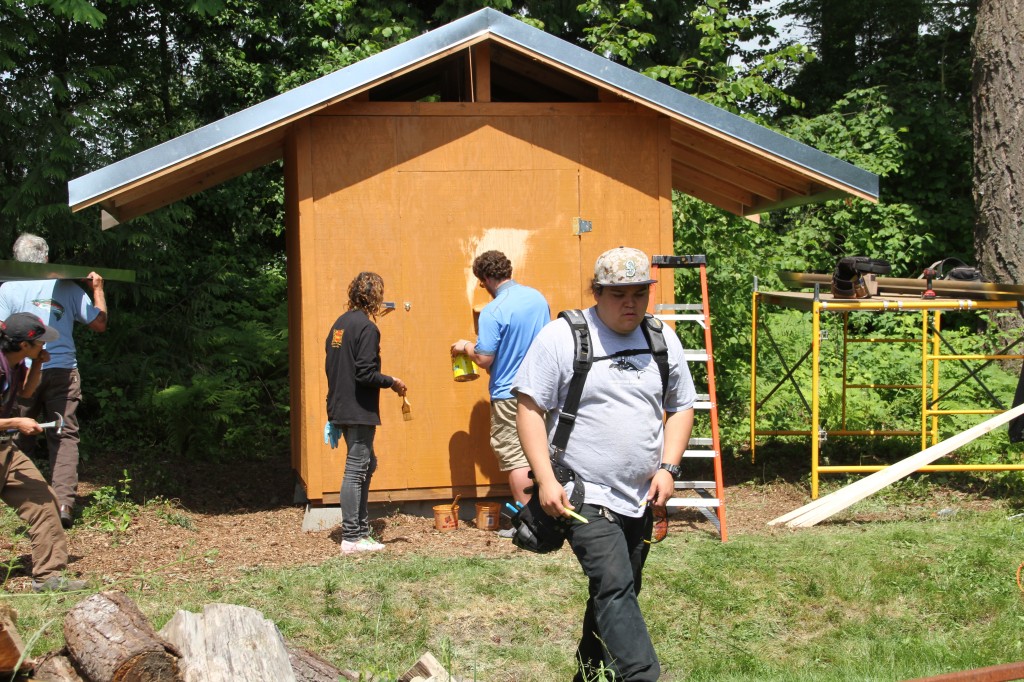
By Andrew Gobin, Tulalip News. Photos by Francesca Hillery, Tulalip Public Affairs.
The Hibulb Cultural Center and Natural History Preserve has a new smokehouse, thanks to a team of students from the Tulalip TERO Construction Training Center (TCTC). Instructor Mark Newland and his students completed the structure in three days. After the work was finished, Hibulb staff and the Rediscovery program served a lunch of traditional foods and honored Newland and his team with blankets.
“Everything went well with the smokehouse. Everyone seemed happy with how it turned out,” said Rediscovery Program Coordinator, Inez Bill-Gobin.
She plans to use the smokehouse for community purposes, and for classes offered at the center through the Rediscovery program. The first group to use the smokehouse will be the canoe family, who hopes to incorporate traditional foods and traditional food preparation into their summer activities.
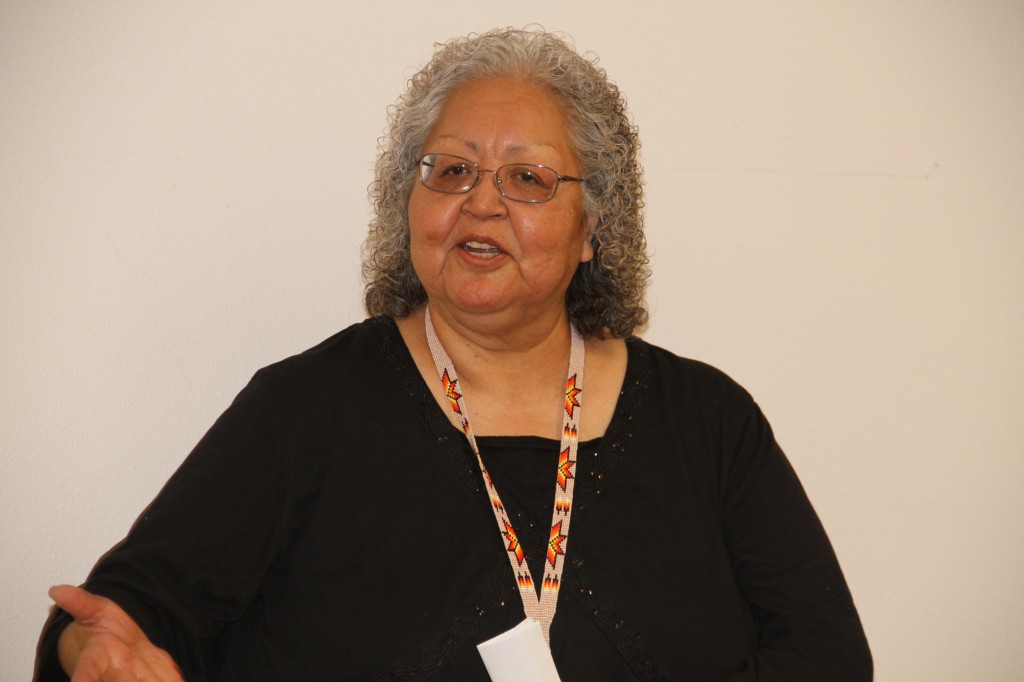
Bill-Gobin said, “For the continuation of our culture, we need to have these things in place.”
The smokehouse was built to replace the old smokehouse after its roof collapsed. The old structure came from the original cultural resources building, and was not the most structurally sound. The new smokehouse is built to last, complete with stained siding, a tin roof, and extended eaves on both sides for covered space to prepare racks of fish, clams, or meat.
Teams from TCTC may return in the fall, at the start of a new term, to complete other projects at the Hibulb Cultural Center, including a covering over the fish cooking pit and a boardwalk through the Natural History Preserve.
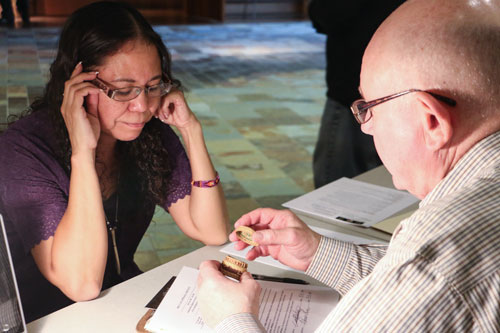
By Brandi N. Montreuil, Tulalip News
TULALIP – It was basket extravaganza at the second Hibulb Appraisal Day on Saturday, May 3, when the center welcomed Brill Lee, an accredited member of the International Society of Appraisers and independent appraiser, for the second time.
Almost a dozen guests attended the event, bringing more than a dozen items to be appraised. Items, unlike the first Hibulb Appraisal Day, were mainly baskets made by local Native American artists and Alaska Native weavers. The baskets displayed a wealth of weaving skill and tribal history.
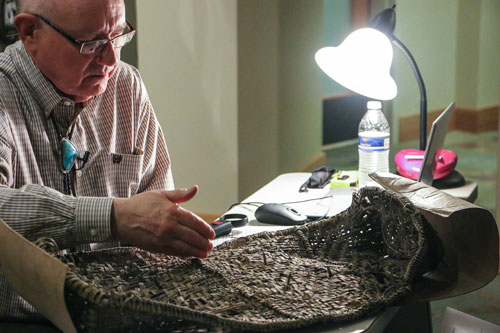
The surprise of the day was a basket-like item rescued from the Nooksack River by a tribal fisherman. The basket featured weaving patterns and material not indigenous to this area and was referred to the Seattle Burke Museum for further study.
The center was gifted a pair of leather beaded gauntlet gloves, donated by guest Troy Jones. The gloves were a trade item in 1930 to a service station in Granite Falls for work completed on a vehicle. The gloves have been in his family since the trade. Lee appraised the item at $3,000 to $3,500 due to the current market value, condition, material used, and artist skill.
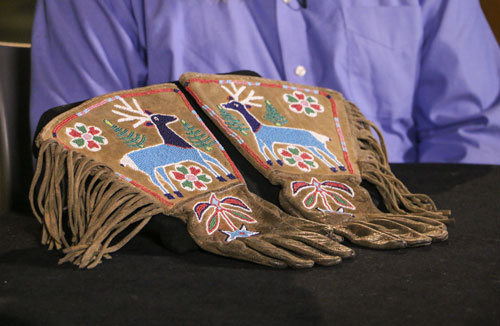
Combined value of items appraised during event totaled more than $8,600.
If you are interested in having an item appraised, you can check out Brill Lee’s website at www.brillleeappraisals.com or by telephone at 425-885-4518. For more information about events happening at Hibulb or the next Hibulb Appraisal Day, please visit their website at www.hibulbculturalcenter.org.
Brandi N. Montreuil:360-913-5402; bmontreuil@tulaliptribes-nsn.gov
